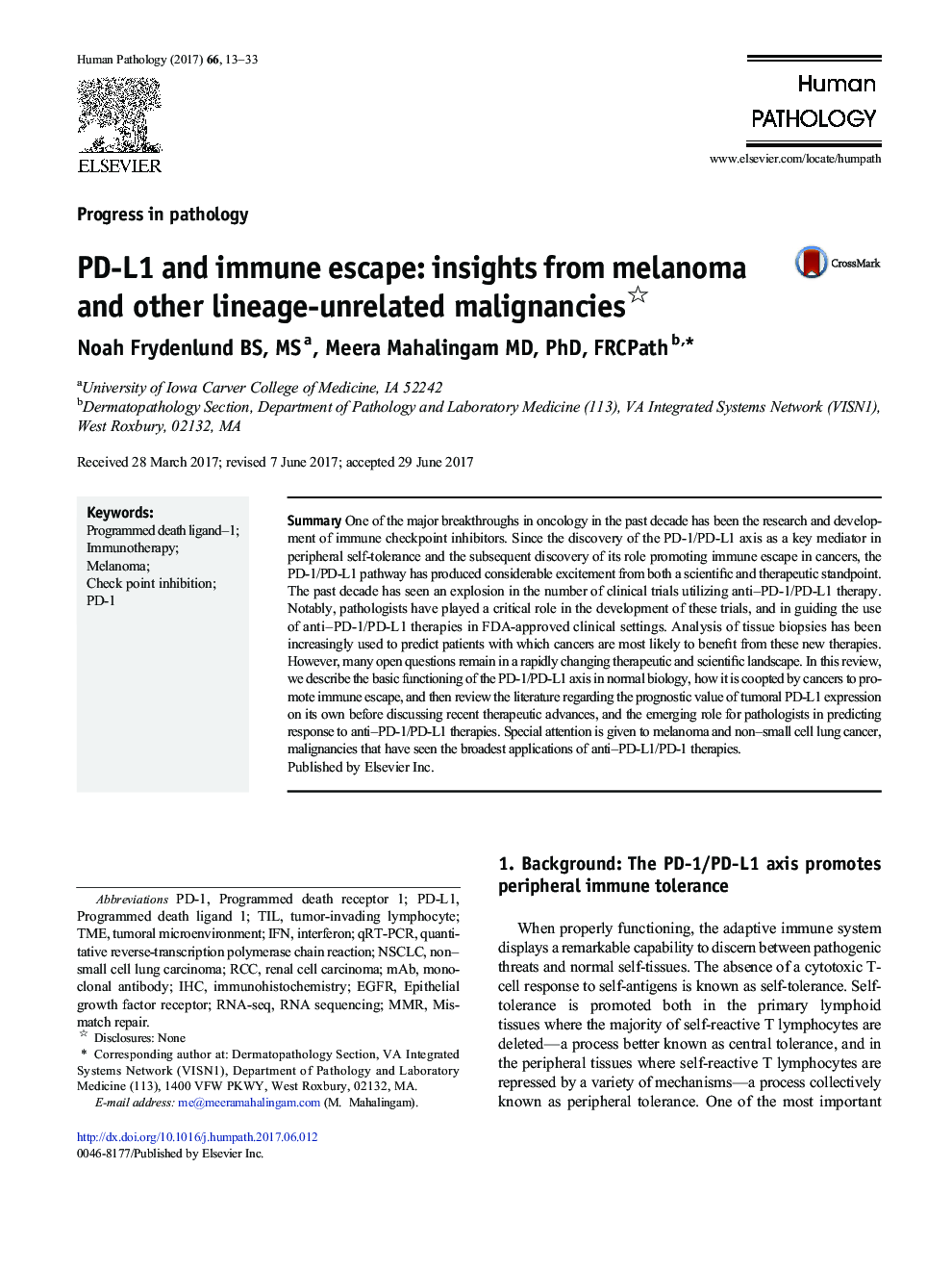| کد مقاله | کد نشریه | سال انتشار | مقاله انگلیسی | نسخه تمام متن |
|---|---|---|---|---|
| 5716112 | 1606644 | 2017 | 21 صفحه PDF | دانلود رایگان |

- The PD-1/PD-L1 axis has emerged as a highly clinically relevant mediator of tumor immune escape.
- The predictive value of PD-L1 expression as a biomarker remains equivocal.
- The utility of IHC in predicting response to anti-PD-1/PD-L1 therapy is an area of ongoing research.
- There is a need for greater standardization to enhance the clinical utility of PD-L1 as a biomarker.
SummaryOne of the major breakthroughs in oncology in the past decade has been the research and development of immune checkpoint inhibitors. Since the discovery of the PD-1/PD-L1 axis as a key mediator in peripheral self-tolerance and the subsequent discovery of its role promoting immune escape in cancers, the PD-1/PD-L1 pathway has produced considerable excitement from both a scientific and therapeutic standpoint. The past decade has seen an explosion in the number of clinical trials utilizing anti-PD-1/PD-L1 therapy. Notably, pathologists have played a critical role in the development of these trials, and in guiding the use of anti-PD-1/PD-L1 therapies in FDA-approved clinical settings. Analysis of tissue biopsies has been increasingly used to predict patients with which cancers are most likely to benefit from these new therapies. However, many open questions remain in a rapidly changing therapeutic and scientific landscape. In this review, we describe the basic functioning of the PD-1/PD-L1 axis in normal biology, how it is coopted by cancers to promote immune escape, and then review the literature regarding the prognostic value of tumoral PD-L1 expression on its own before discussing recent therapeutic advances, and the emerging role for pathologists in predicting response to anti-PD-1/PD-L1 therapies. Special attention is given to melanoma and non-small cell lung cancer, malignancies that have seen the broadest applications of anti-PD-L1/PD-1 therapies.
Journal: Human Pathology - Volume 66, August 2017, Pages 13-33